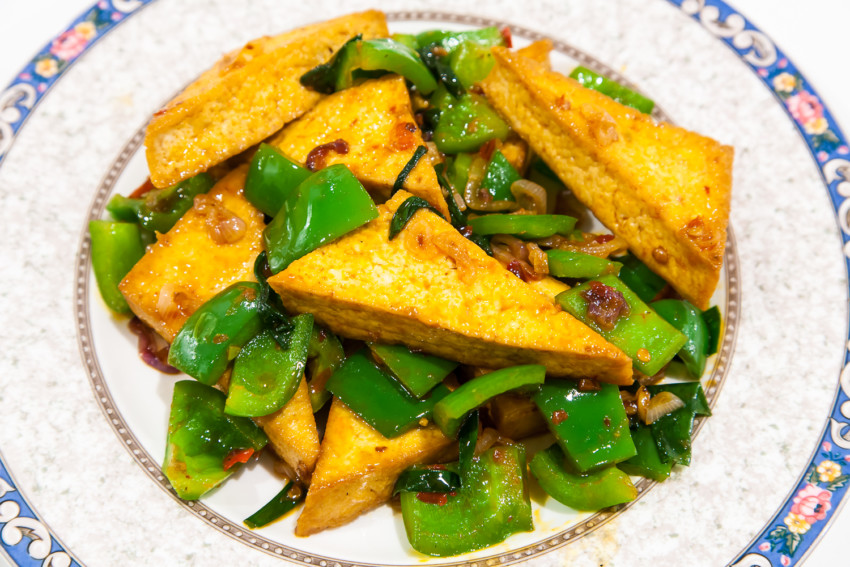
Homestyle Braised Tofu (家常豆腐)
May 7, 2022 Print
This Homestyle Braised Tofu is a quick and easy way to make plain tofu into a flavorful delight. Firm tofu is first seared golden using a non-stick pan, then braised in a slightly spicy, savory, and sweet sauce until the tofu absorbs most of the liquid.
This recipe is quite flexible. You can adjust the seasoning to your own liking by adding more chili bean paste or sugar. You can also add more vegetables or not use vegetable at all.
I do think Pixian Douban, a type of Chinese chili bean paste, adds a nice color and subtly spicy flavor to the dish. But if you are making this for kids who can’t tolerate any heat, you can opt out of using any spicy sauce. Just make sure to increase the light soy sauce from 1 teaspoon to 1 tablespoon if you’re not using Pixian Douban.
Vegan, Low Carb
Preparation Time: 10 minutes
Total Time: 30 minutes
Servings: 2 to 4 people
Ingredients:
- 1 box of firm tofu (about 1 lb) 1
- 2 green onions (green parts only)
- 1 to 2 shallots
- 1 medium or 2 small bell peppers
- 1 teaspoon Pixian Douban 2
- 1 teaspoon light soy sauce 2
- 2 teaspoons sugar
- 1/4 cup water
- 1/2 teaspoon corn or tapioca starch
- 2 tablespoons vegetable oil
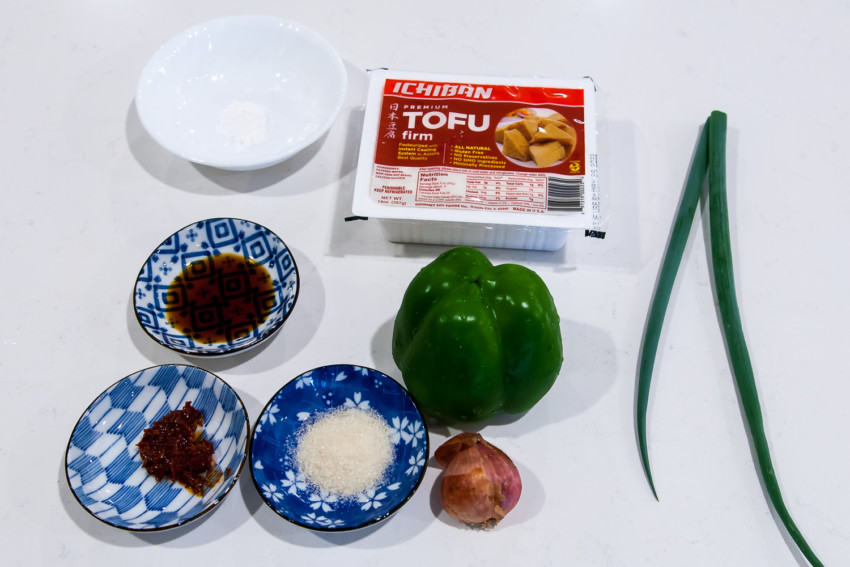
Preparation:
- Cut the tofu into 1/2 inch- thick (~1.25 cm) squares or triangles. Peel and slice the shallots into small pieces. Cut the green onion into long wedges. Wash the bell pepper. Discard the seeds and veins (the inside white parts). Chop the bell pepper into large dices.

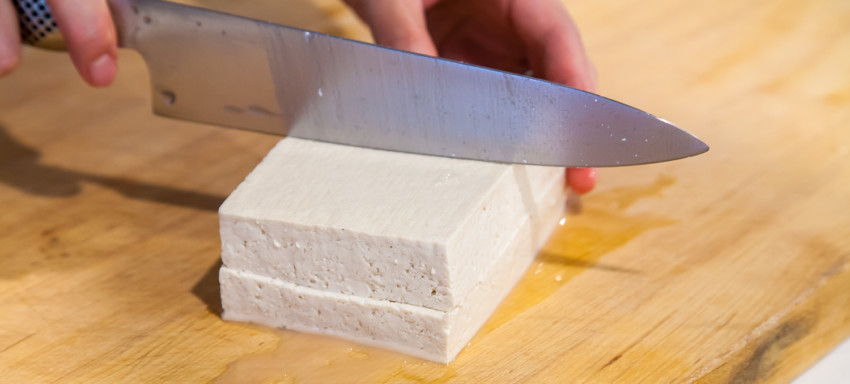
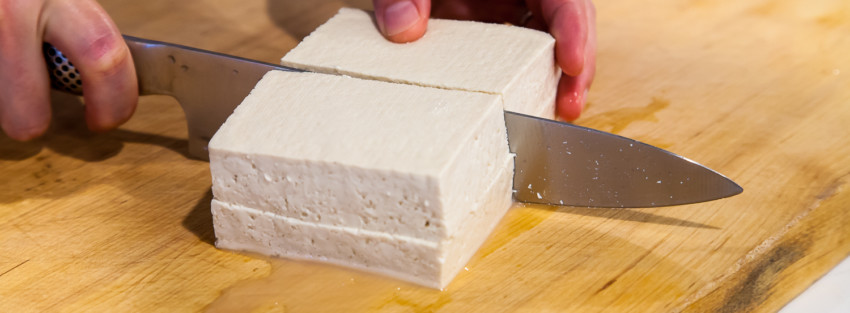
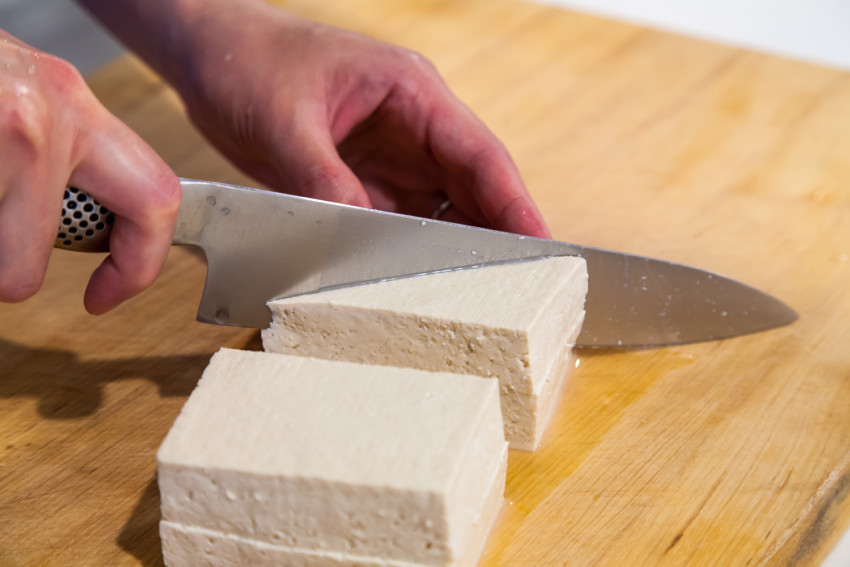
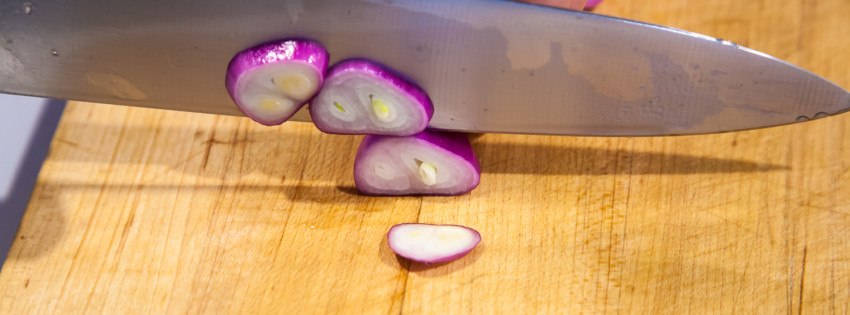
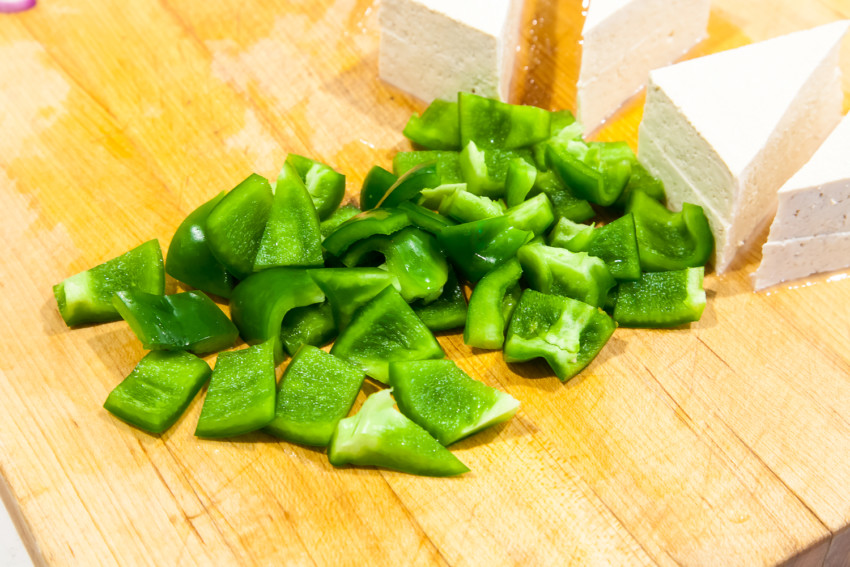
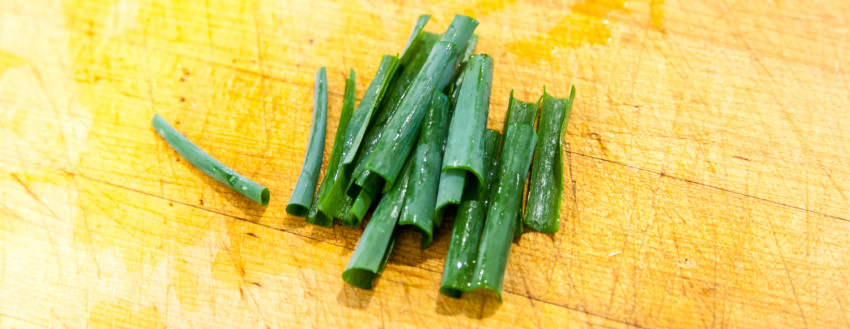
- Heat a large non-stick pan under medium heat. When the pan is getting warm, add 1 tablespoon vegetable oil, spreading it around. Gently add the tofu to the non-stick pan. Do not overlap the pieces (if your non-stick pan is too small, do it in two batches).
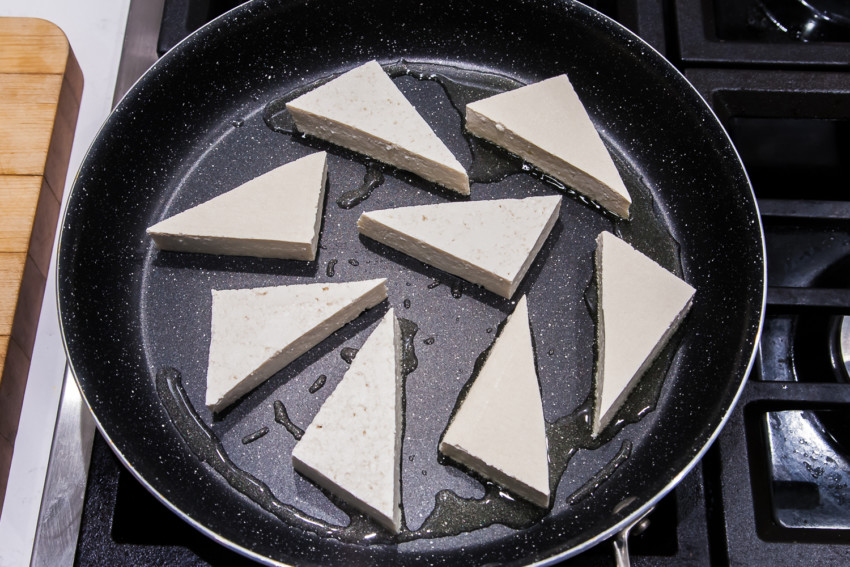
- Sear the tofu for at least 5 minutes or until golden. Then carefully turn the tofu pieces to the other side and sear for another 5 minutes. Sear the narrow sides for 1 to 2 minutes each. Transfer the tofu slices out once all sides become golden.
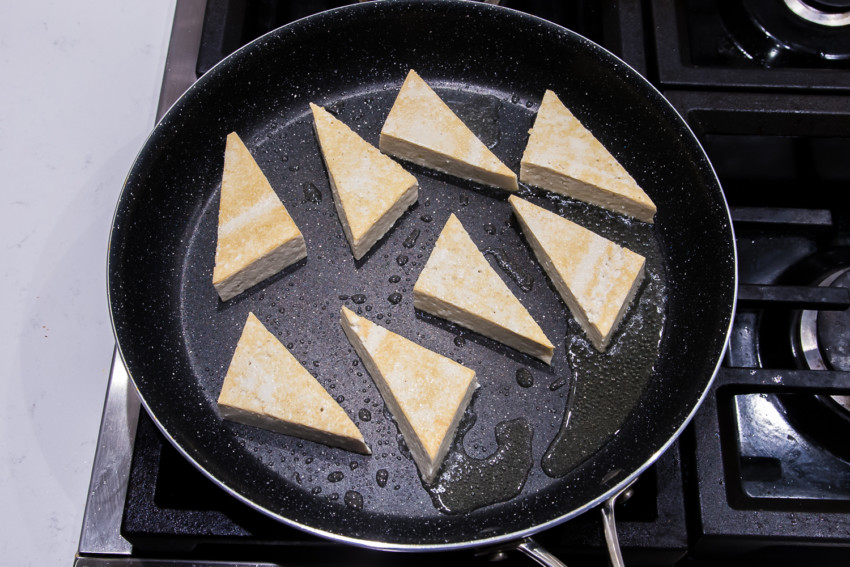
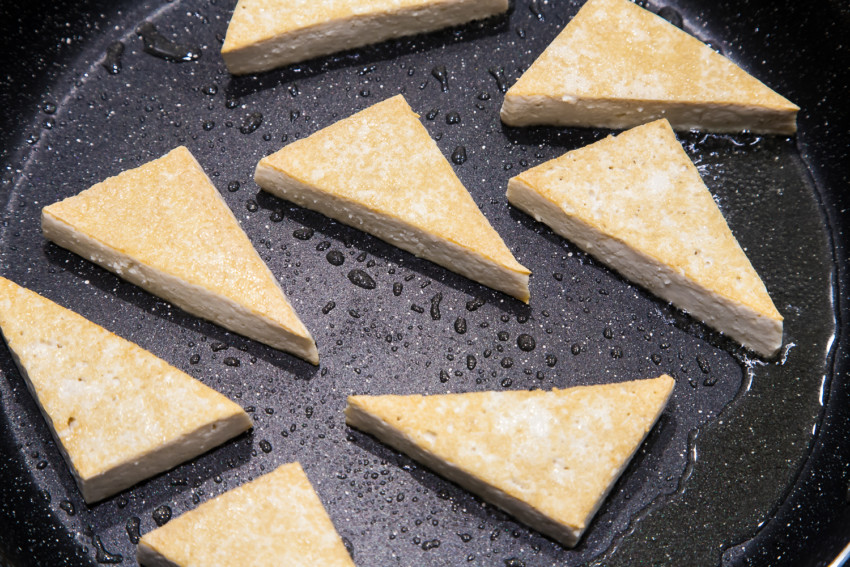
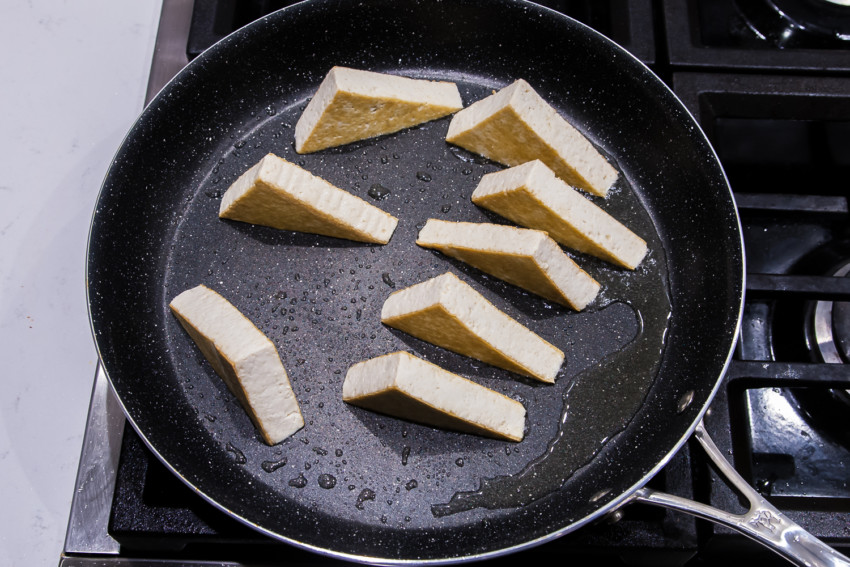
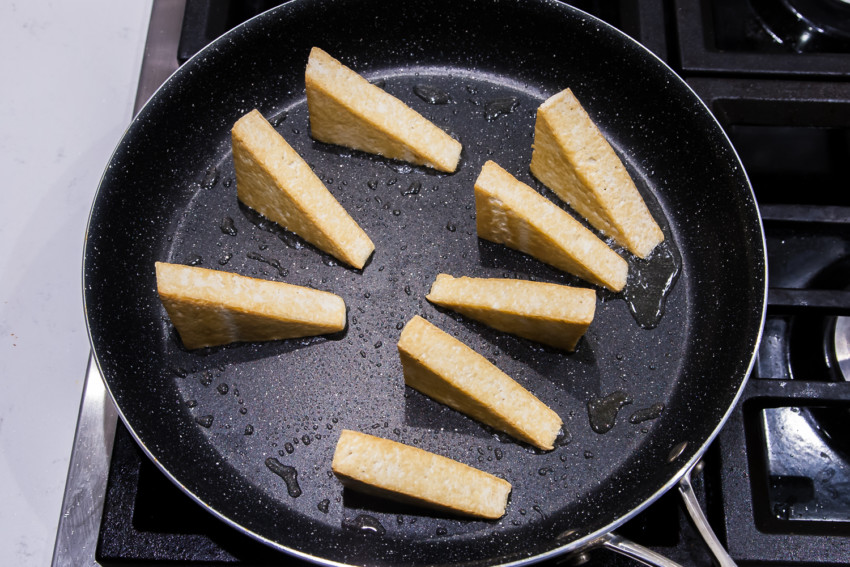
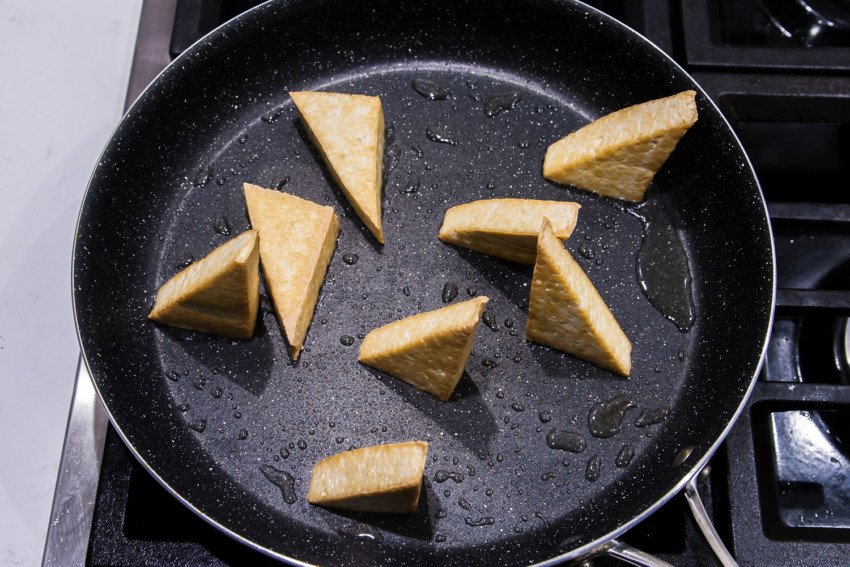
- In a small bowl, mix together 1 teaspoon of light soy sauce, 2 teaspoons of sugar, and 1/4 cup of water. Use a separate small bowl to make the starch water by mixing 1/2 teaspoon of corn starch and 2 tablespoons of water.
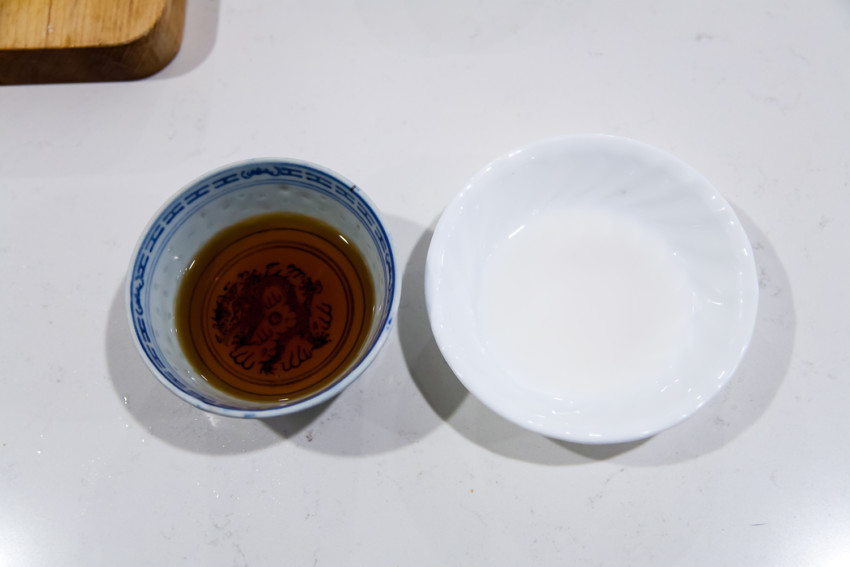
- Heat a wok (or the same non-stick pan) under medium heat. When the wok is warm, add 1 tablespoon of vegetable oil. Add the sliced shallots and 1 teaspoon of Pixian Douban, stirring slightly to form red oil. Then add the cooked tofu, stirring and tossing until the tofu glistens with red oil (see pictures). Turn up the heat to medium-high. Pour in the mixed sauce from step 4, mixing well with the tofu slices. Add the bell peppers and green onion wedges, tossing and stirring with the tofu until liquid reduces in volume by at least half. Then add a bit of starch water to thicken the liquid (one teaspoon at a time). If liquid reduces too quickly and there isn’t enough left, skip the starch water. Transfer everything to a plate and enjoy right away!
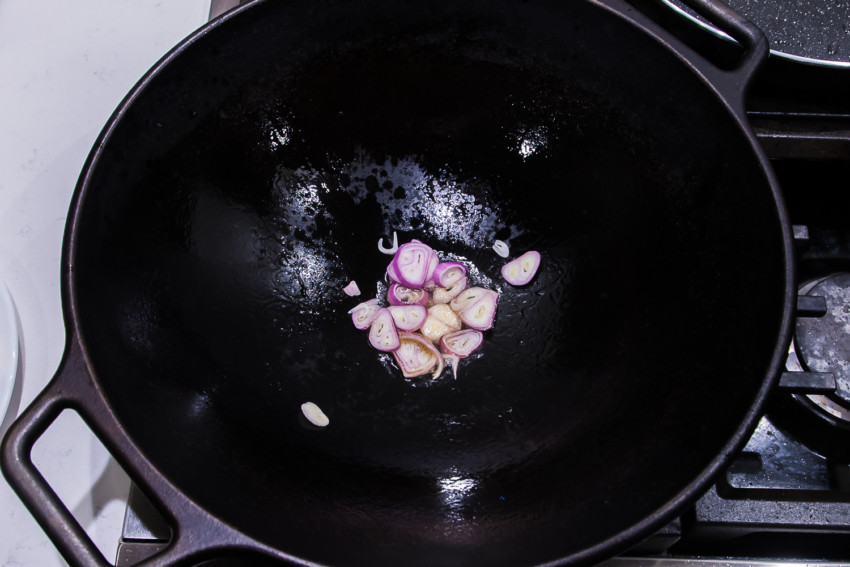
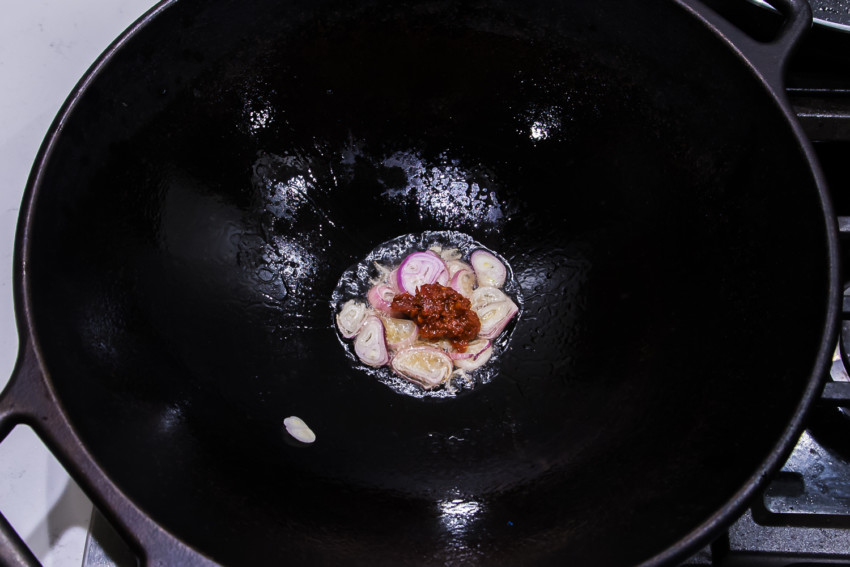
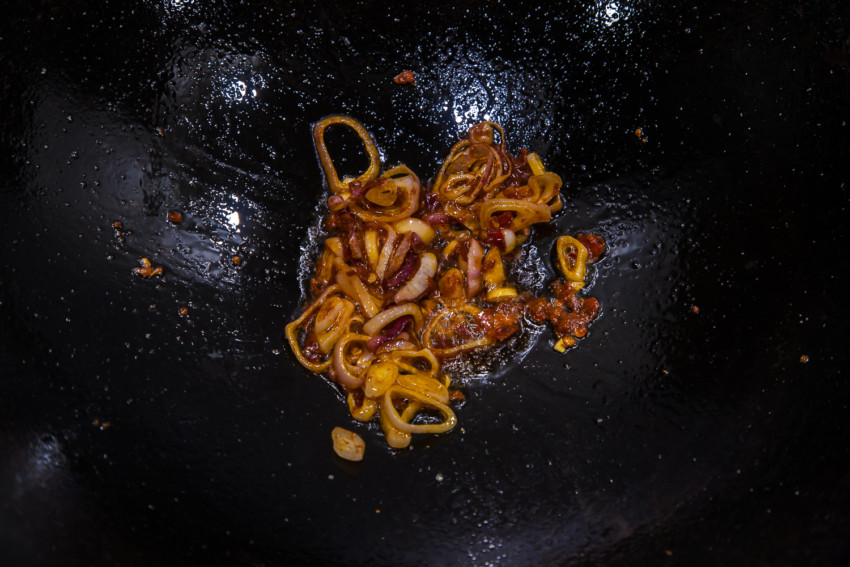
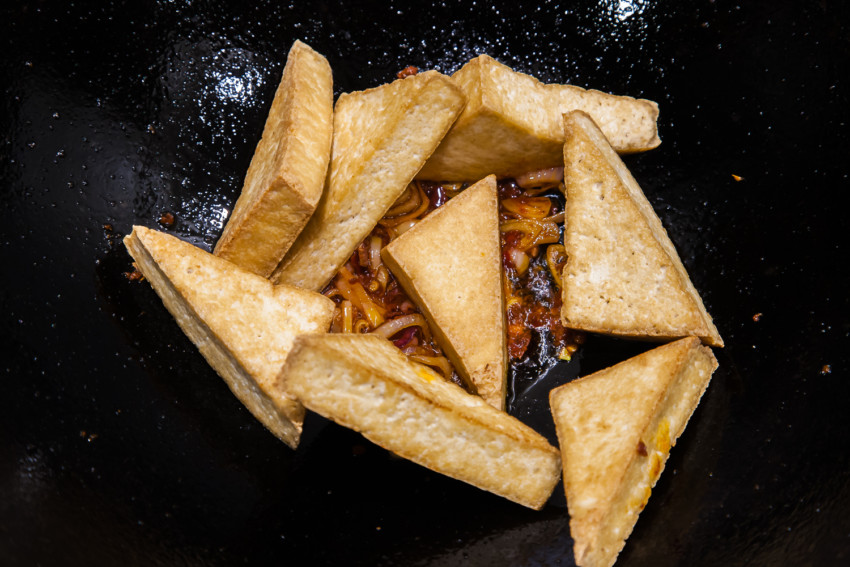
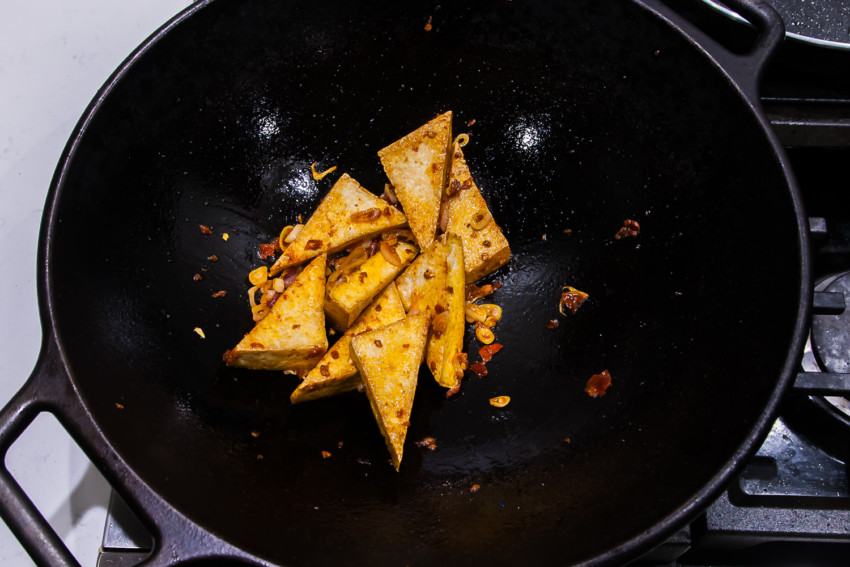
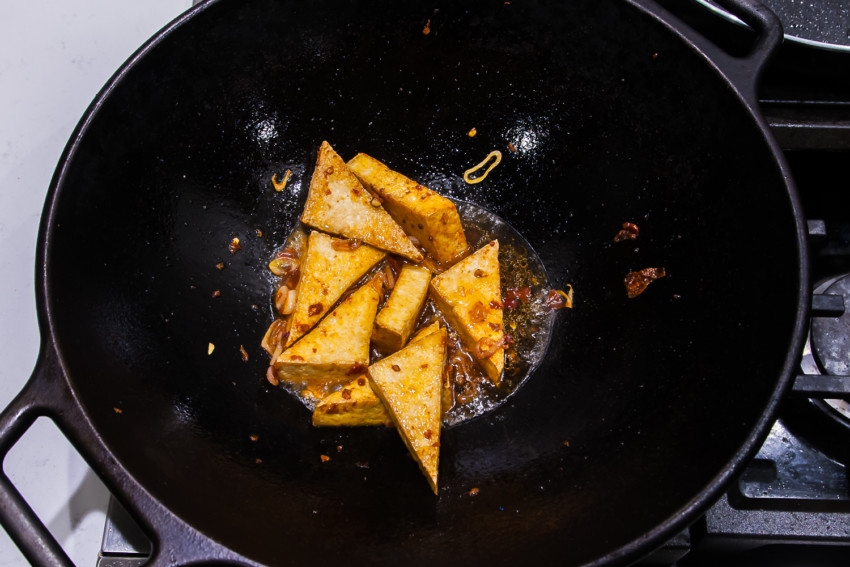
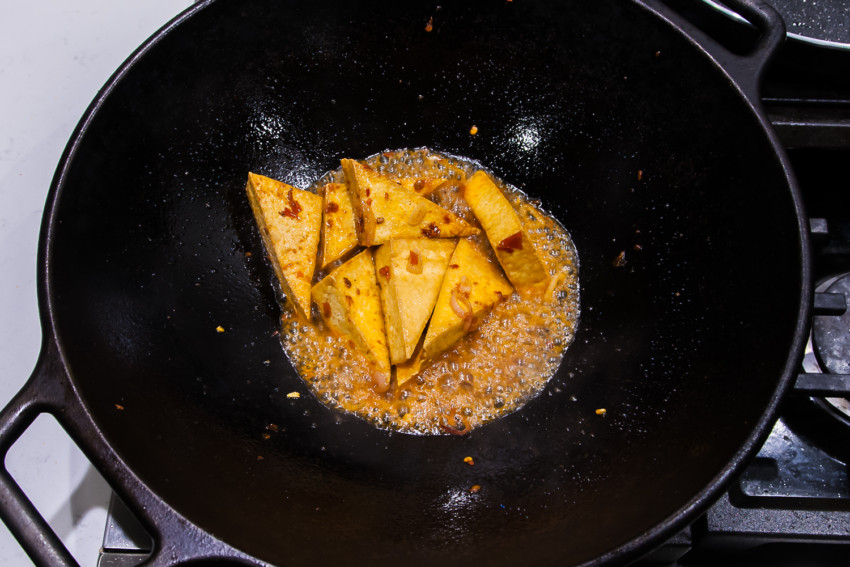
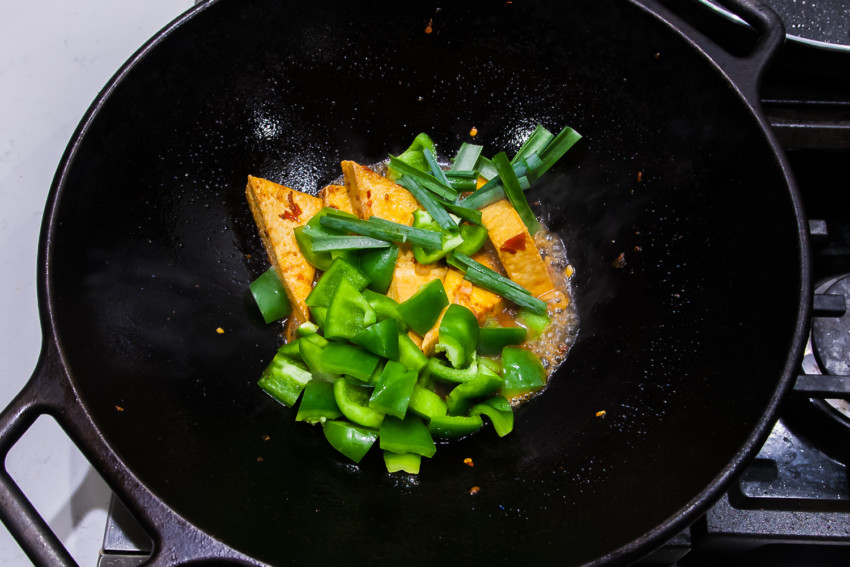
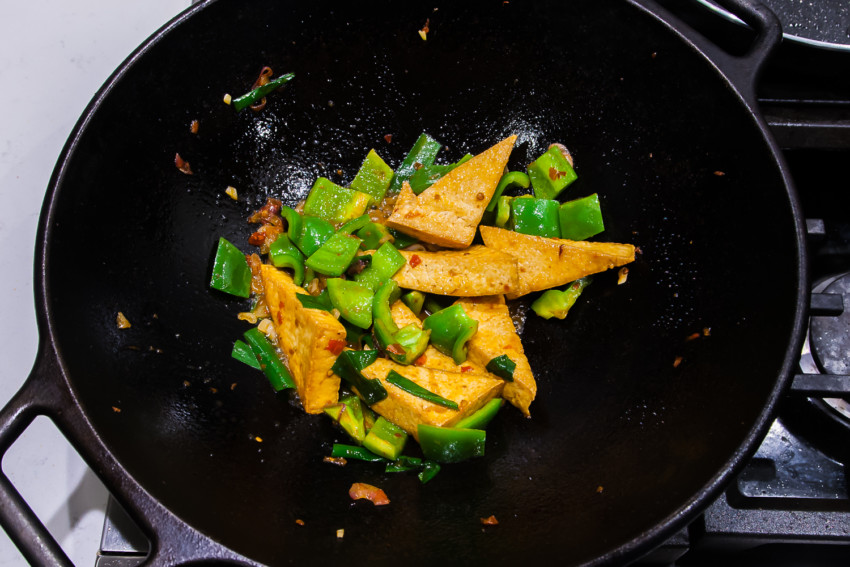
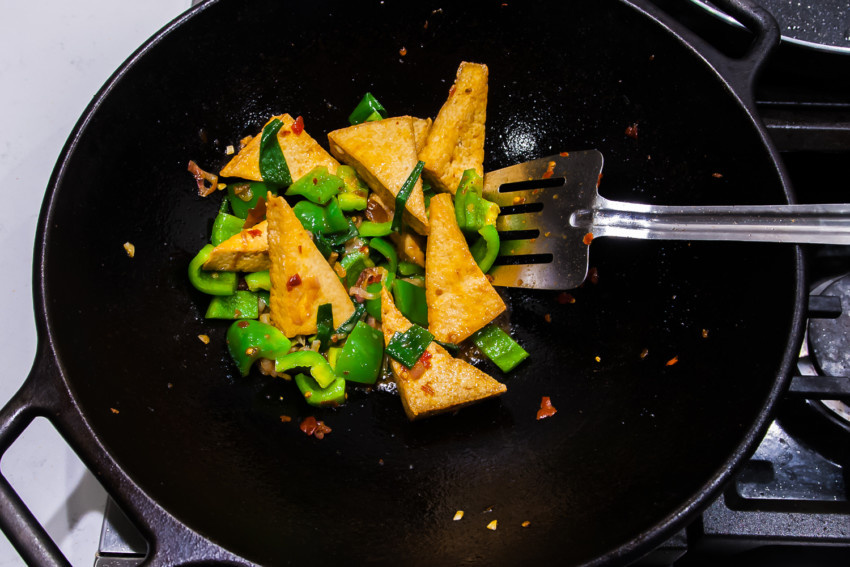
Bon Appétit

Notes:
- Either firm or medium firm tofu works.
- For this recipe, you can also use other Doubanjiang. Doubanjiang is a type of chili bean paste made from fermented broad beans. The most famous Doubanjiang is the Pixian Douban (郫县豆瓣酱), which is required in many Sichuan dishes. If opting out of using Douban sauce, increase the amount of light soy sauce to 1 tablespoon, and add 1/2 teaspoon of dark soy sauce. This is because Doubanjiang is quite salty in nature. You can find Doubanjiang in most Asian grocery stores.
As an Amazon Associate I earn from qualifying purchases.


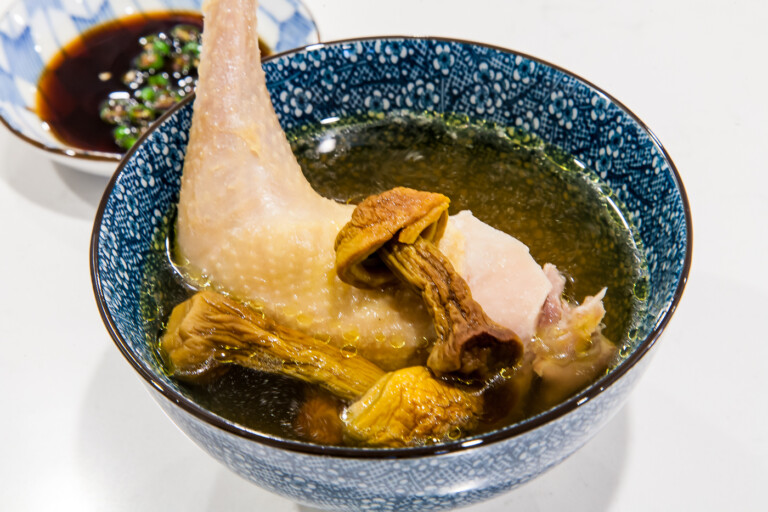
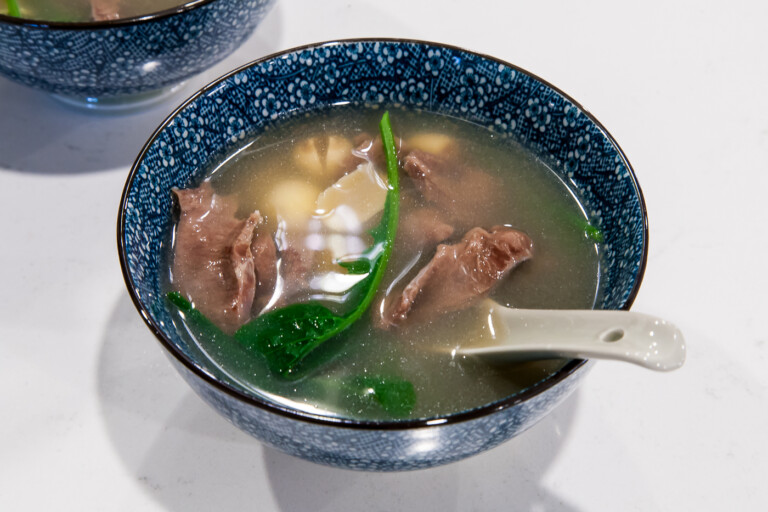
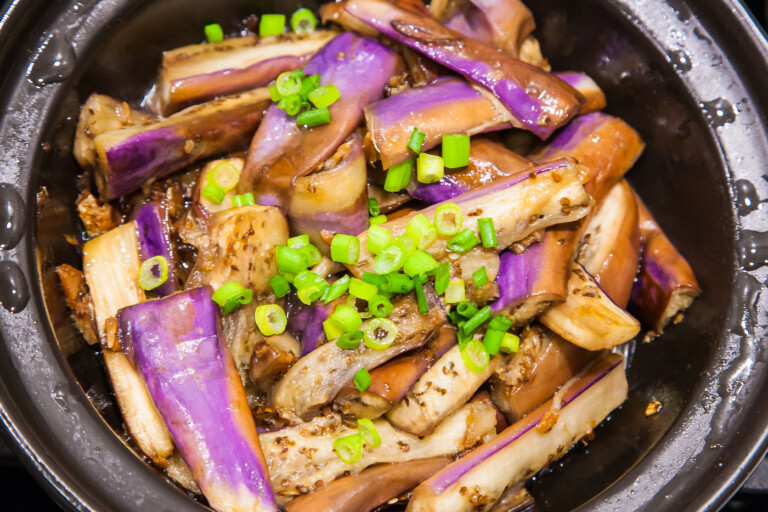
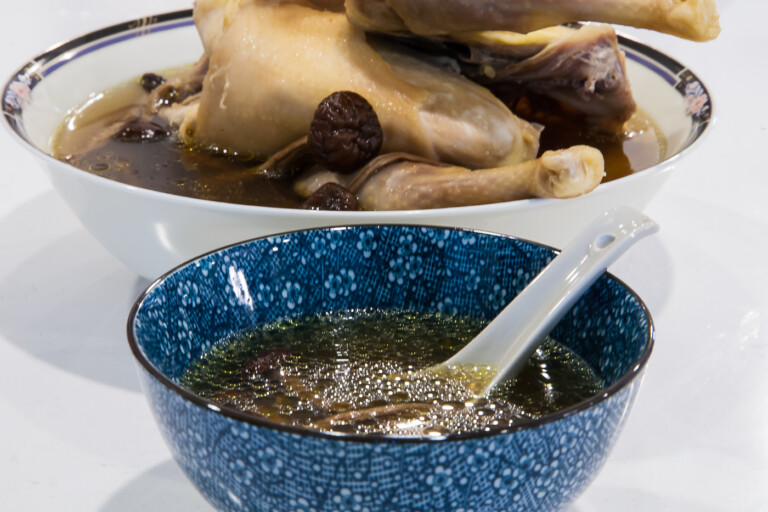
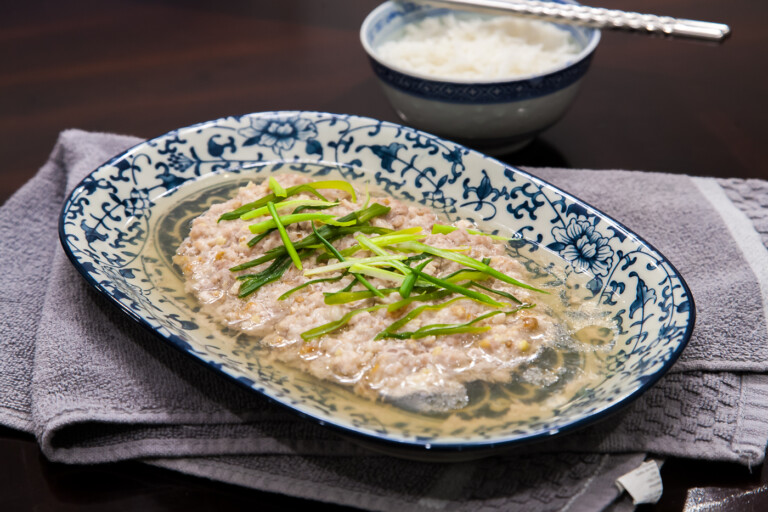
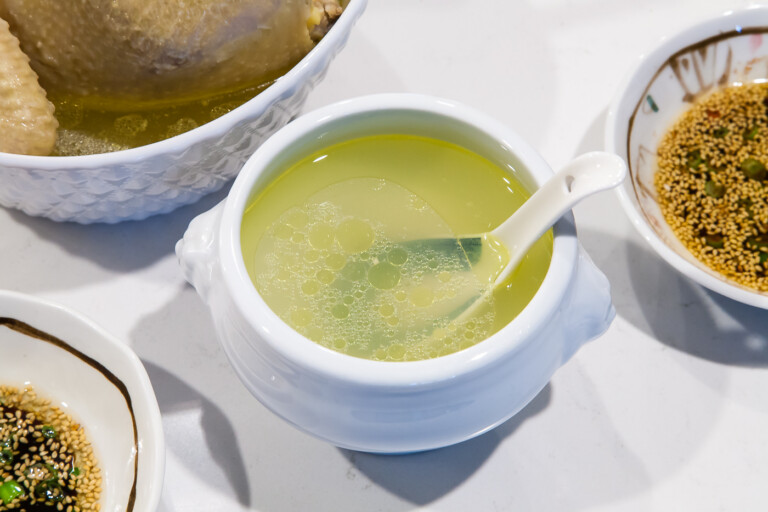
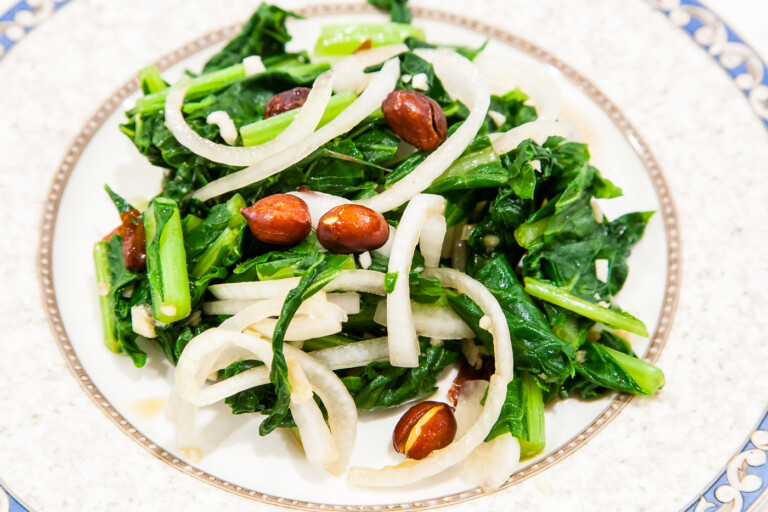
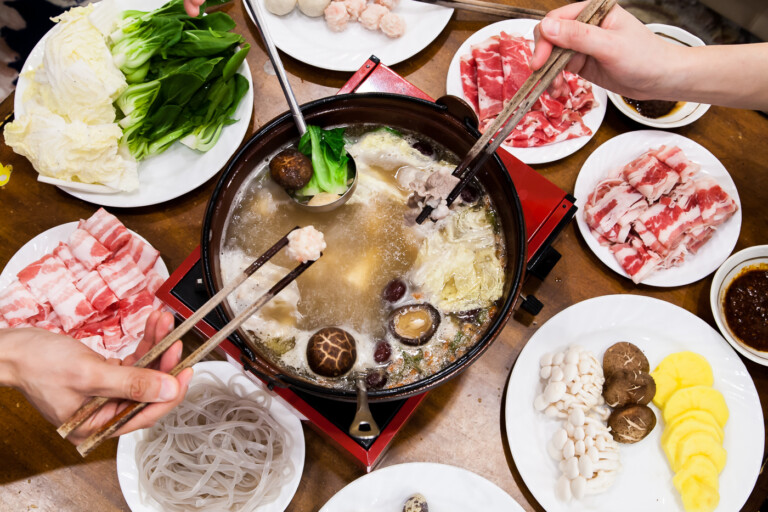
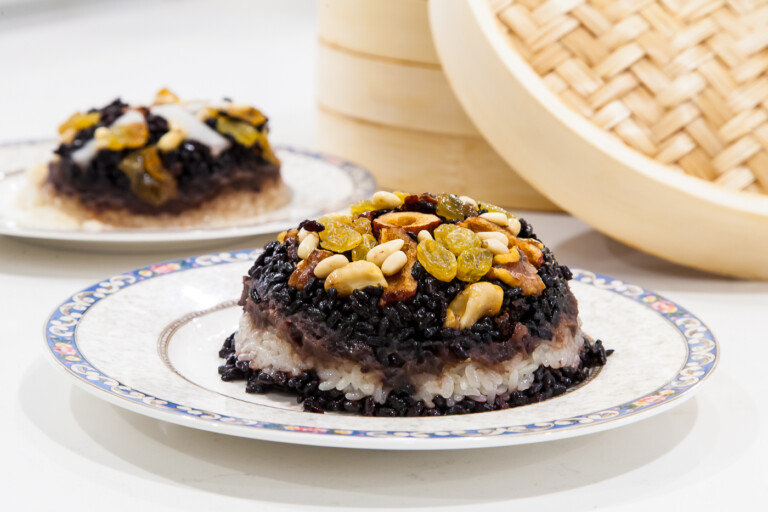
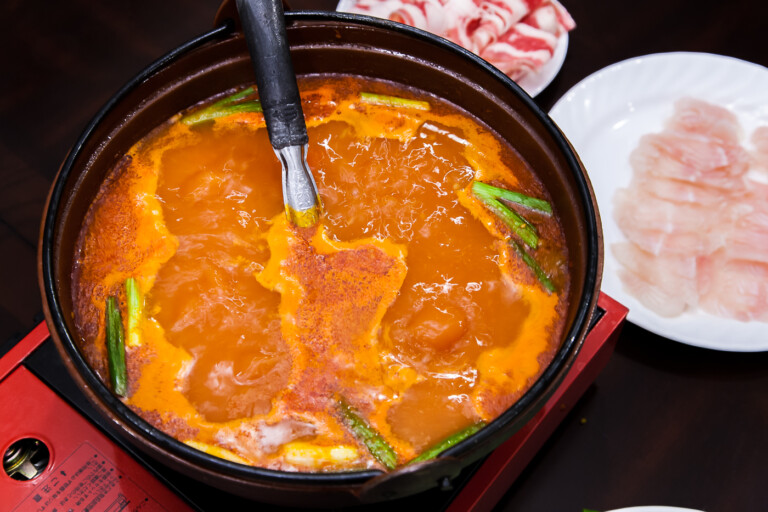
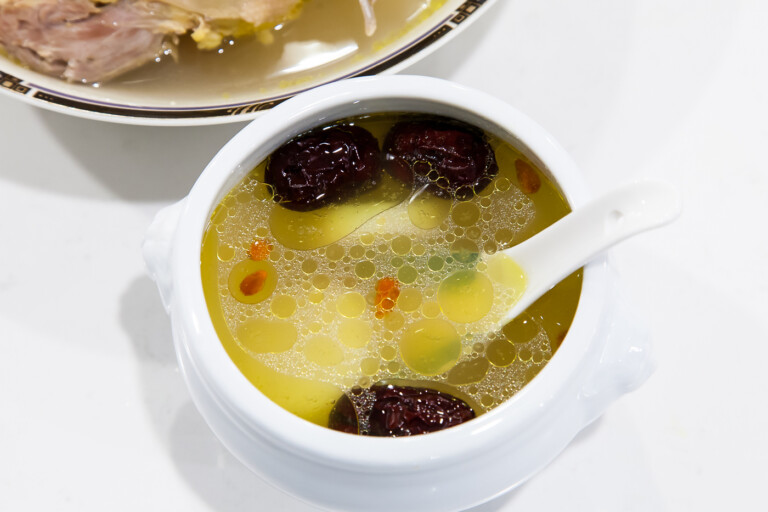
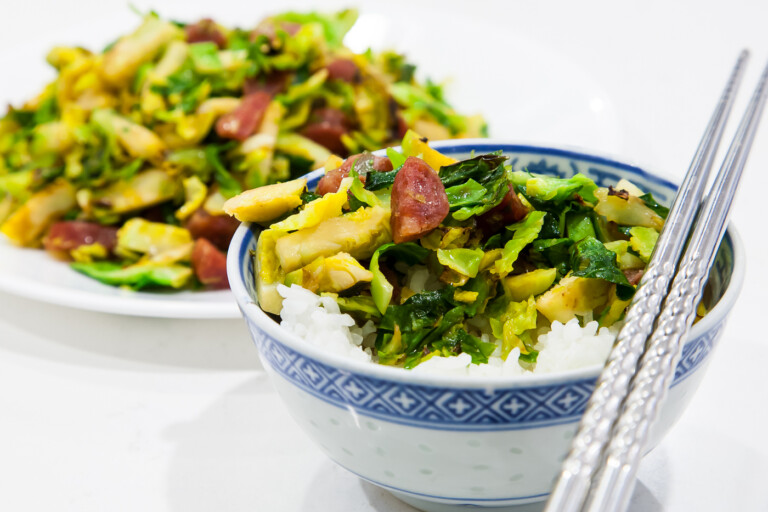
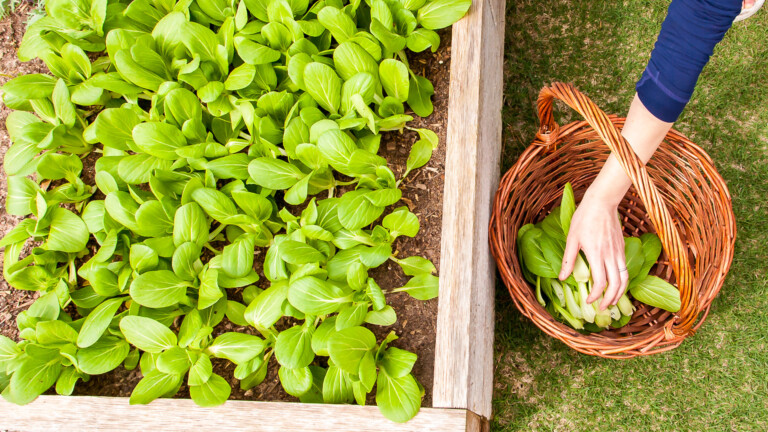
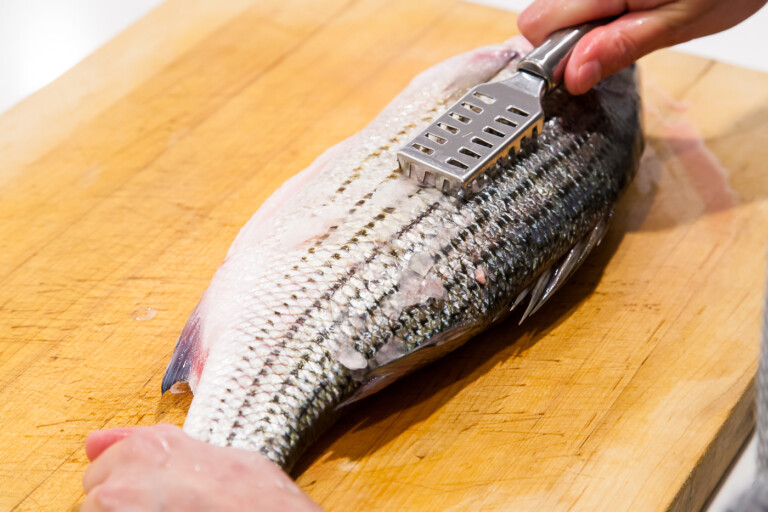
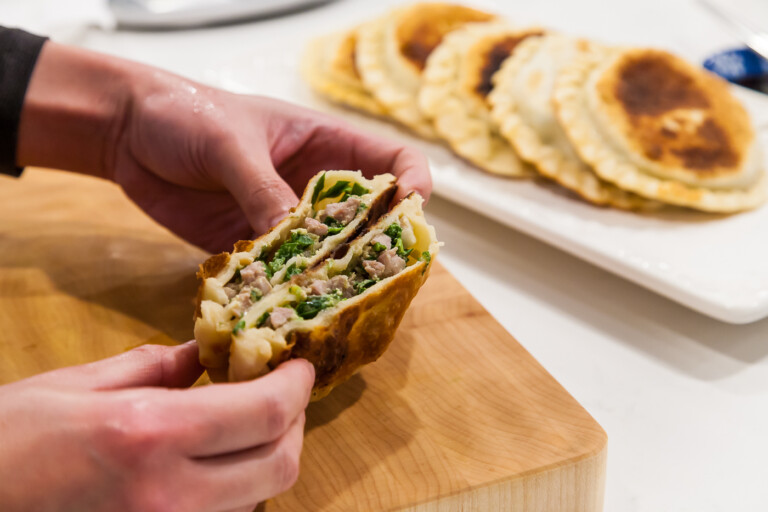
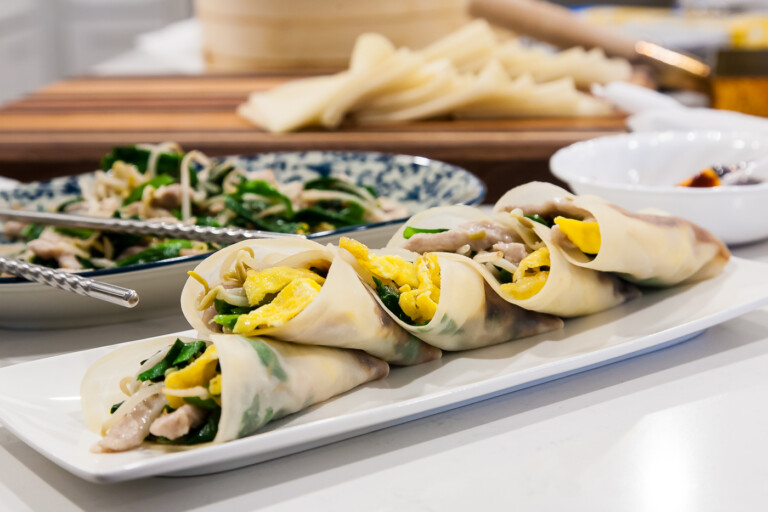
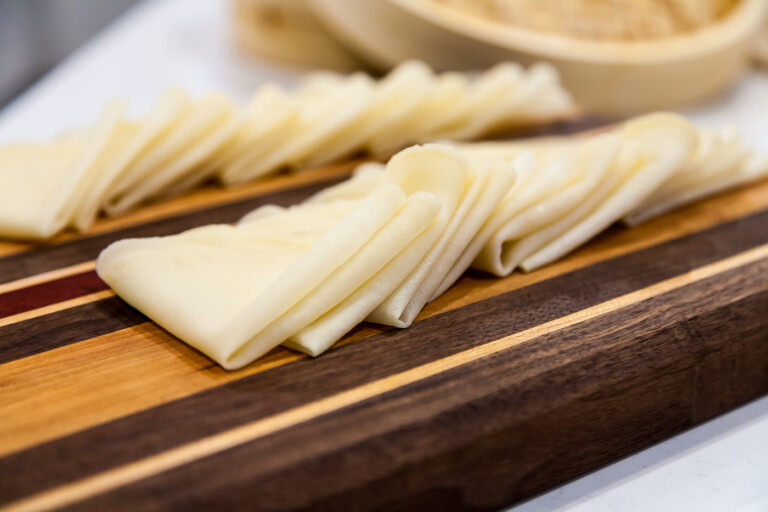
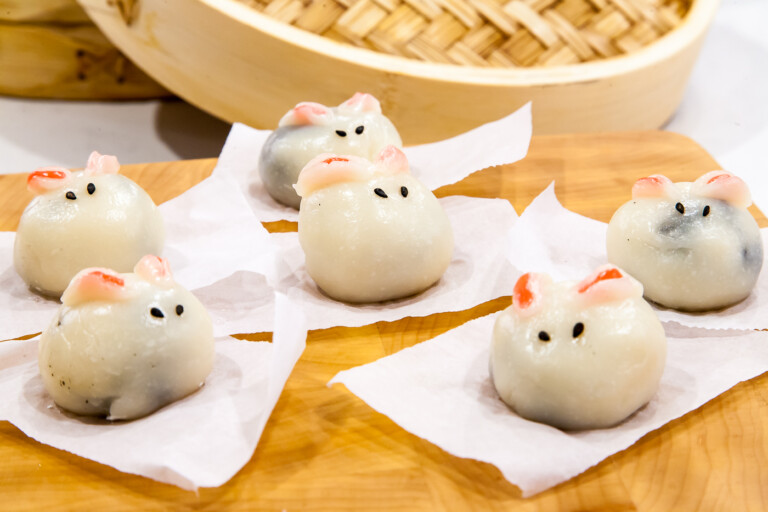
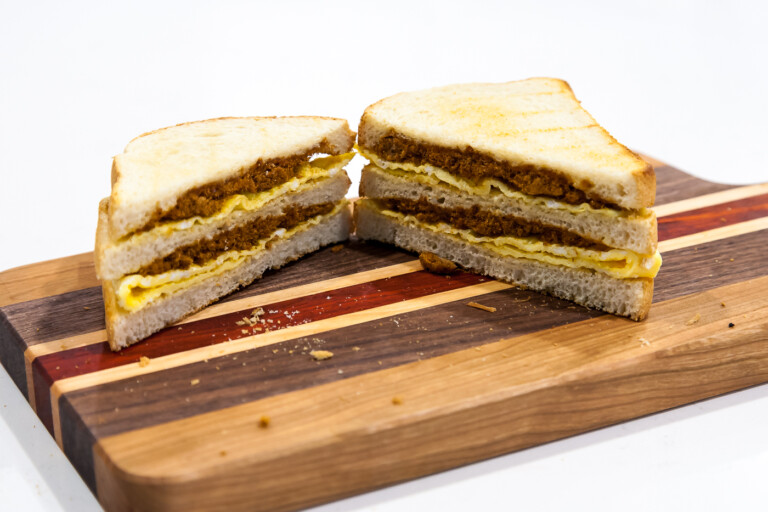
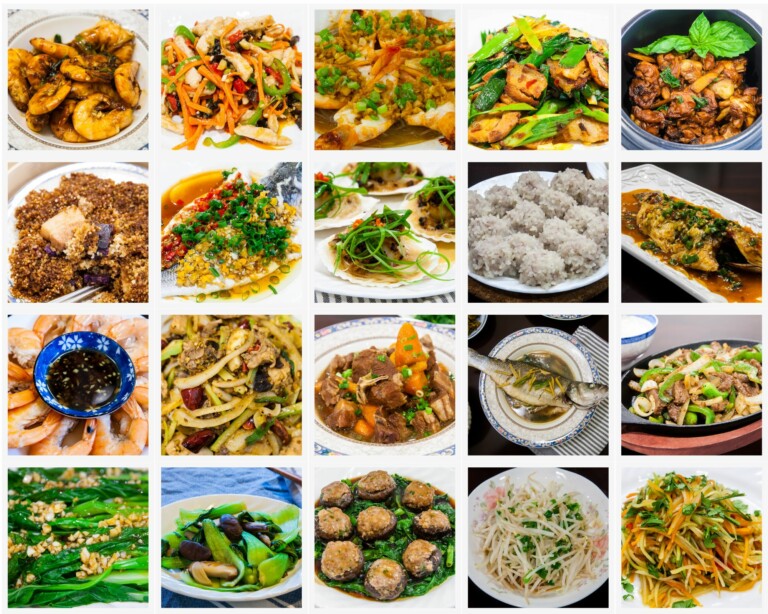
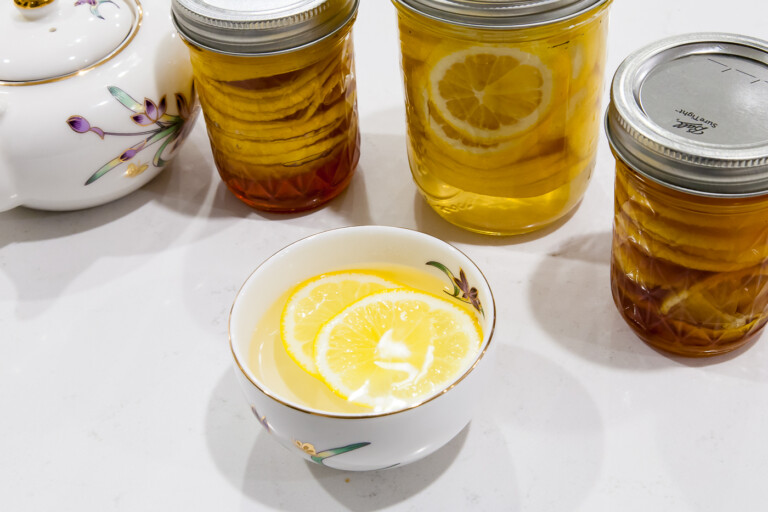
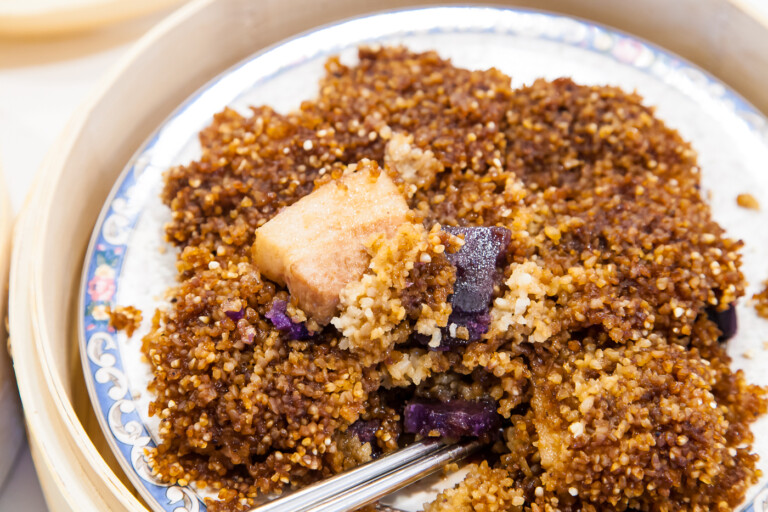
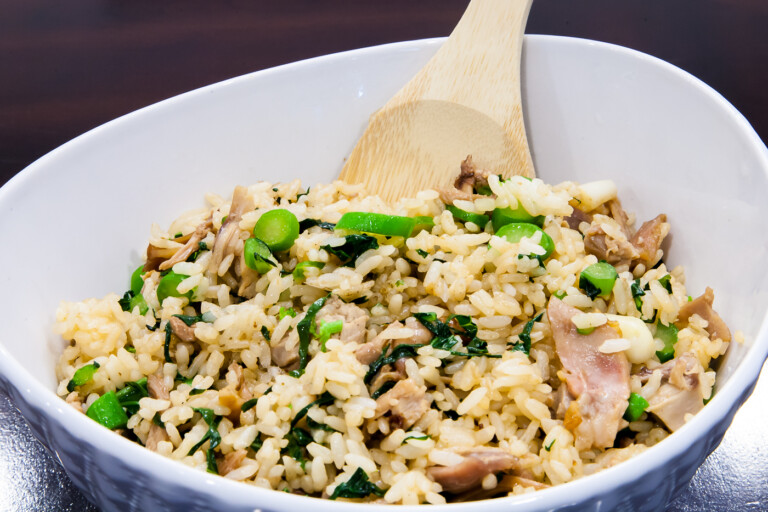
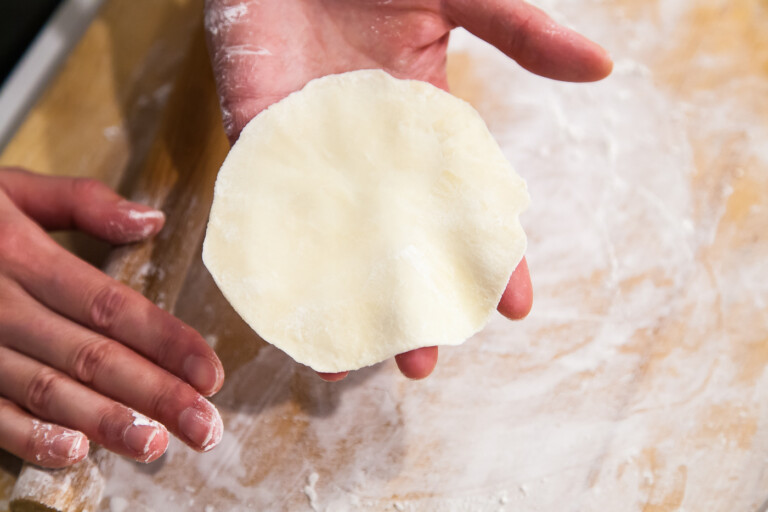

kevin wrote:
This looks very fast. I think I’ll make this one today.
It’s interesting that you use the tops of green onions as well as shallots. In some US cookbooks (e.g. Julia Child’s French ones), the bottom of green onions are often mentioned as a substitute for shallots (which can’t be found in many US grocers – even if the store has them they are moldy because hardly any Americans buy them I guess). And, in the New Orleans dialect (I’m from Louisiana originally), green onions are actually called ‘shallots’ so that they don’t have a native name for shallots, which I guess they would have to call ‘French shallots’ haha. Anyway, apparently you find the difference in taste to be distinct enough to specify shallot + green onion tops. Which is interesting.
AsianCookingMom wrote:
How did it turn out?